If your dog devours food in seconds, you’re not alone. Many pet parents face this issue, often wondering if their furry friend is even tasting his meal. While it may seem harmless or even amusing, eating too quickly can cause significant health problems for dogs.
Understanding why your dog eats fast and how to encourage slower eating can greatly improve his well-being. Let’s explore why some dogs eat quickly, the potential dangers of fast eating, and practical strategies to help slow your dog’s eating habits.
Why Do Dogs Eat So Fast?
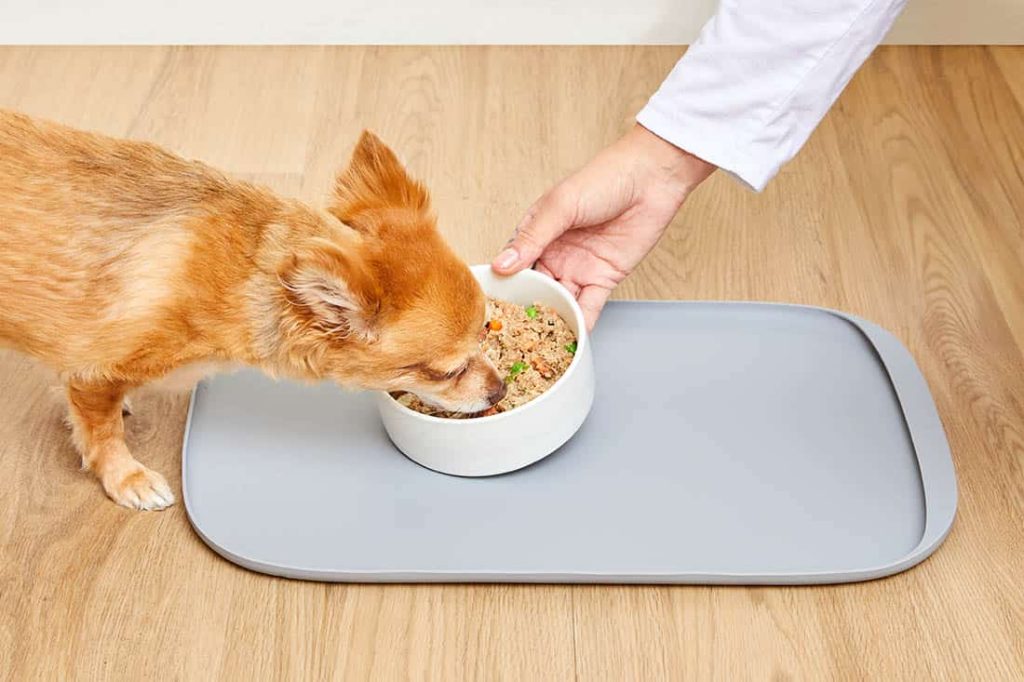
There are several reasons why dogs may eat quickly, ranging from natural instincts to behavioral and medical factors. Here are a few reasons why your buddy might be gulping down his meal.
Evolutionary Instincts
Dogs are descendants of wild canines, where food was scarce and competition was fierce. In the wild, eating quickly ensured survival.
Some dogs may still exhibit this behavior, especially in multi-pet households where competition feels real. The pooch who doesn’t gulp down mouthfuls of food quickly might not get any at all!
Learned Behavior
If a dog has ever experienced food scarcity—such as strays or rescues—they might instinctively eat quickly out of fear that food won’t be available later. Speed eating in this situation may stem from his previous experience where food quickly disappeared.
Hunger or Inadequate Feeding Schedule
If a dog isn’t being fed enough or on a consistent schedule, he may eat faster when given food, thinking he needs to store up calories. Your dog may simply be trying to get what he can because he doesn’t know where his next meal is coming from.
Medical Conditions
Some health issues, such as parasites, diabetes, or hyperthyroidism, can make a dog feel hungrier than normal, leading to rapid eating. This is one reason why it’s vital to ensure your furry friend is getting regular checkups.
Boredom or Anxiety
Just like humans may stress-eat, dogs may scarf down food as a coping mechanism for stress or boredom. In this case, your pup is not getting the mental stimulation he needs to feel comfortable and relaxed when he eats.
Which Dog Breeds are Prone to Fast Eating?
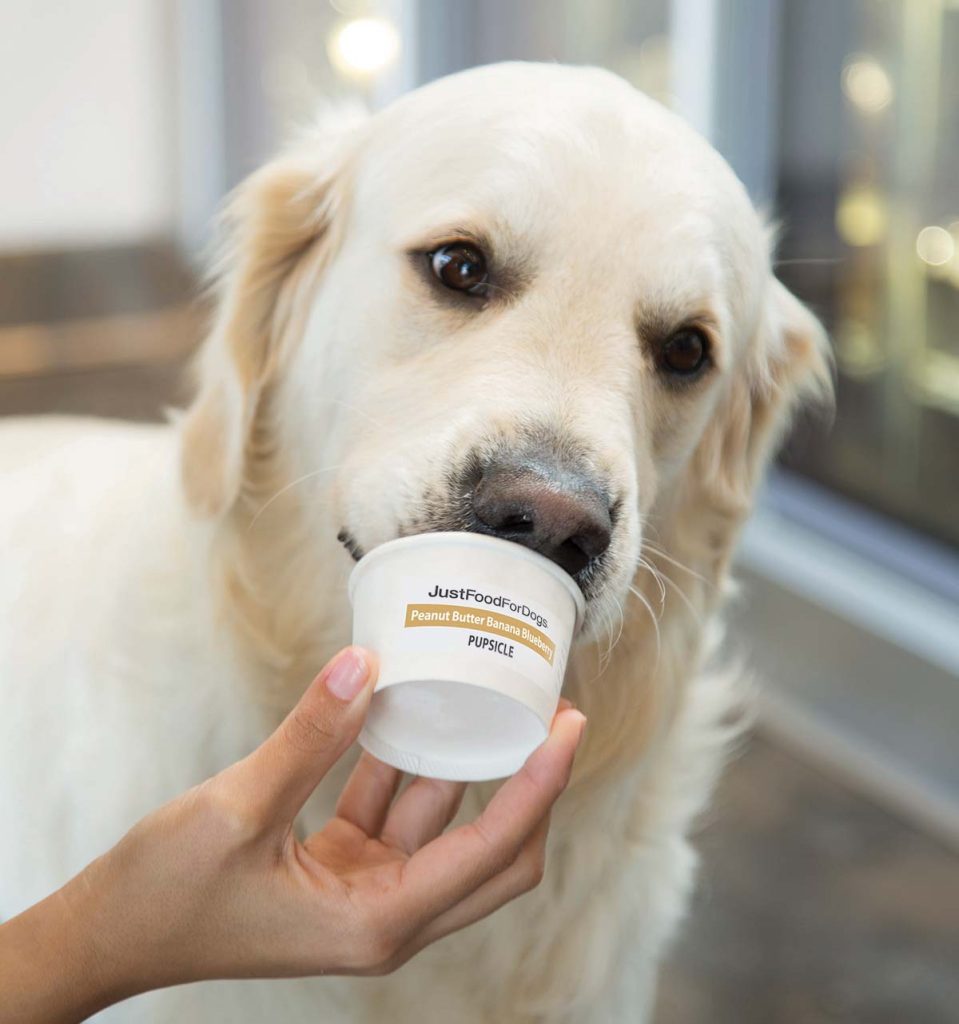
Some dog breeds are naturally more prone to eating quickly due to their size, metabolism, or historical background. Breeds that were bred for hunting or guarding often have a strong food drive, leading them to eat more quickly.
These breeds include Labrador Retrievers, Beagles, Golden Retrievers, and Cocker Spaniels. Large breeds such as Great Danes and German Shepherds are also known for eating rapidly, which increases their risk of developing bloat. Additionally, small breeds like Dachshunds and Pugs may eat quickly due to their competitive nature and eagerness for food.
If your dog’s breed is known for fast eating, take extra precautions to slow their eating pace and reduce health risks. For example, make sure they have the right kind of dog bowl for their size. It might also be worthwhile to enroll them in dog training so that they get enough mental stimulation.
What are the Health Risks Associated With Fast Eating?
Eating too quickly can lead to several health problems, some of which can be severe or even life-threatening.
- Choking and Gagging: When food is swallowed too quickly, there is a higher risk of choking. Large kibble pieces or unchewed food may get lodged in the throat, leading to coughing, gagging, or even a choking emergency.
- Digestive Issues: Eating too quickly prevents proper chewing, which is an essential part of digestion. Dogs that swallow food whole are more prone to indigestion, gas, and upset stomachs.
- Vomiting and Regurgitation: A dog that eats too fast may swallow a lot of air along with their food, leading to bloating and vomiting shortly after meals.
- Bloat (Gastric Dilatation-Volvulus – GDV): One of the most serious risks of fast eating is bloat, also known as GDV. This life-threatening condition occurs when the stomach fills with gas and twists, cutting off blood flow. Large, deep-chested breeds like Great Danes, German Shepherds, and Dobermans are especially at risk, but bloat can occur in any dog.
How Can You Slow Down Your Dog’s Eating?
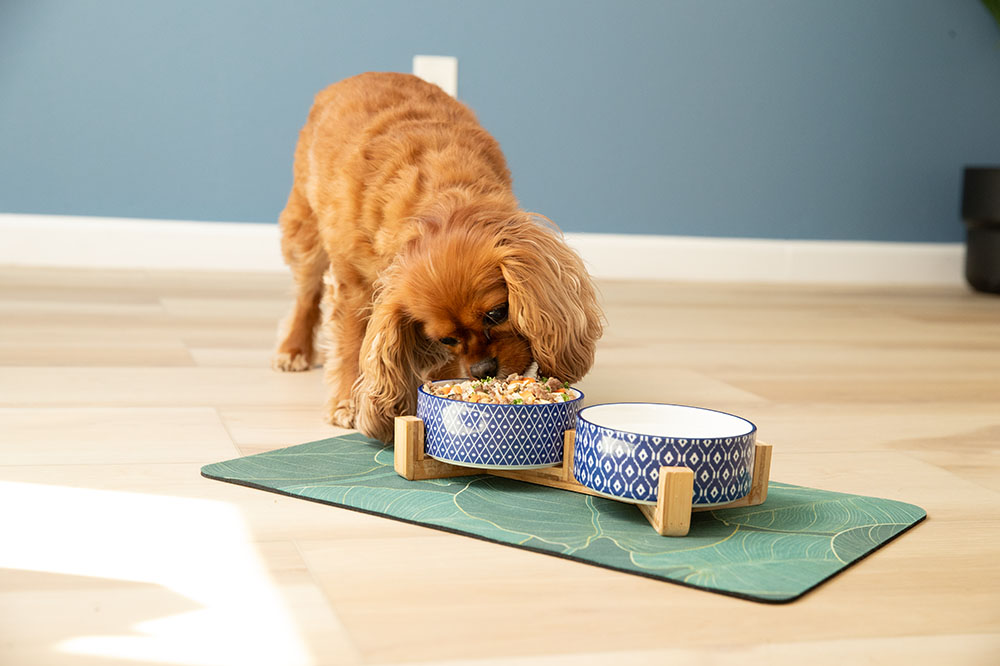
If your dog is a speed eater, there are several effective strategies to encourage slower eating habits.
Use a Slow Feeder Bowl
Slow-feeder bowls have raised ridges or maze-like patterns that require dogs to work around obstacles to access their food, naturally slowing them down.
Try a Puzzle Feeder
Puzzle feeders or treat-dispensing toys make mealtime more interactive. Your dog has to solve a food puzzle challenge to access his food, thereby engaging his mind while slowing his eating. While it seems like a simple thing, sometimes the right food bowl can make all the difference.
Spread Out Their Food
Instead of feeding your dog from a bowl, try spreading kibble on a flat surface like a cookie sheet or a snuffle mat. This forces him to search for his food, slowing down his pace. You could also use a muffin tin to spread out his food among the cups. This will help him slow his roll (pun intended)!
Use Portion Control
Dividing meals into smaller portions can help. Instead of giving one large meal, feed smaller amounts multiple times a day, allowing for better digestion and preventing overeating. Here again, the muffin pan can work well for dividing your dog’s food into smaller portions.
Hand-Feed Your Dog
Hand-feeding your dog a portion of their meal not only slows him down but also reinforces positive behavior and strengthens your bond with him. You’re controlling the portions and only giving small amounts of food at a time, which will help him slow his eating habits.
Add Water or Moisture to Their Food
Mixing water or broth into dry kibble makes the food more difficult to gulp down in one go. This trick can also improve hydration, especially for dogs that don’t drink enough water.
Use Food-Dispensing Dog Toys
Interactive dog toys like Kong toys, treat balls, or snuffle mats require dogs to work for their food, ensuring they eat at a slower pace. They also provide mental stimulation to help alleviate boredom.
Place Obstacles in Your Dog’s Food
You can place obstacles that your dog has to work out in order to eat. For example, you might place tennis balls in your dog’s food. They are large, so he can’t accidentally ingest them, they block his access to large mouthfuls of food, and they are non-toxic.
Feed Dogs in Separate Rooms
For dog owners with multiple four-legged roommates, you might want to feed each of them in separate rooms. That way, they won’t feel like they’re competing with one another, and they will slow down and enjoy their food more.
Does the Type of Food Matter?
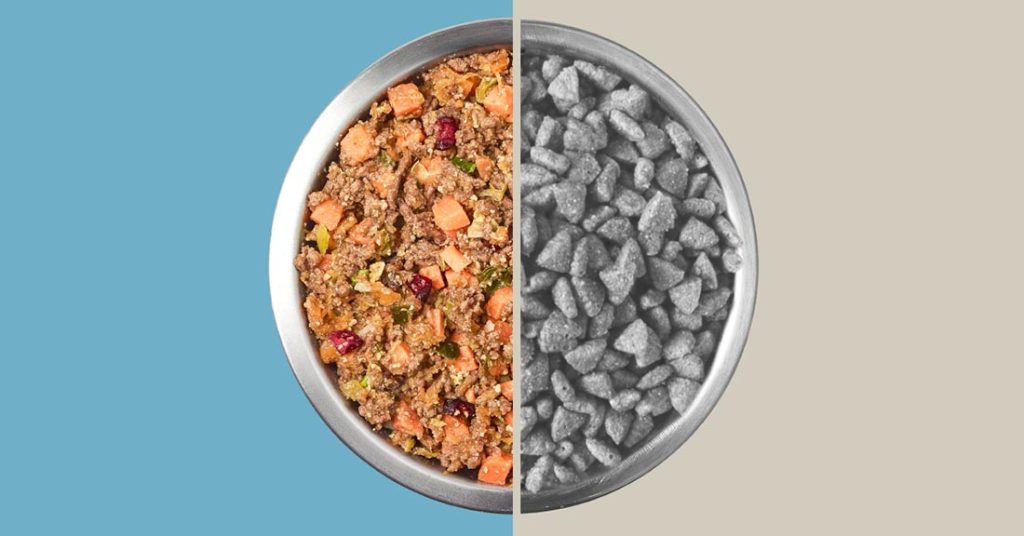
The type of food your dog eats can significantly impact their eating speed. Dry kibble is often the fastest for dogs to consume, especially when the pieces are small and easy to swallow.
Some pet food brands offer larger kibble sizes designed to encourage more chewing, which can help slow down fast eaters.
On the other hand, wet food has a softer texture that can be lapped up quickly, leading some dogs to eat faster than they would with dry food. However, mixing wet food with kibble can promote a more balanced eating pace by encouraging dogs to chew the firmer pieces.
Fresh or raw food diets also play a role in mealtime speed. Whole ingredients, such as chunks of meat or vegetables, require more chewing than processed kibble, naturally slowing down the eating process.
Some pet owners find that freezing portions of their dog’s food or offering chilled meals can also extend the time it takes to eat. Making food denser or more textured forces dogs to work through their meal instead of simply gulping it down.
Another consideration is feeding style. Some dogs respond well to food being served in a way that mimics foraging behavior. For example, hiding food in a snuffle mat, using slow-feeder bowls, or offering food in frozen or semi-frozen chunks can encourage a more deliberate eating pace.
The goal is to engage a dog’s natural instincts to chew and savor their food rather than inhaling it in a matter of seconds. By selecting the right food type and serving it in a way that promotes slower consumption, pet owners may significantly reduce the risks associated with rapid eating.
When Should You Seek Veterinary Advice?
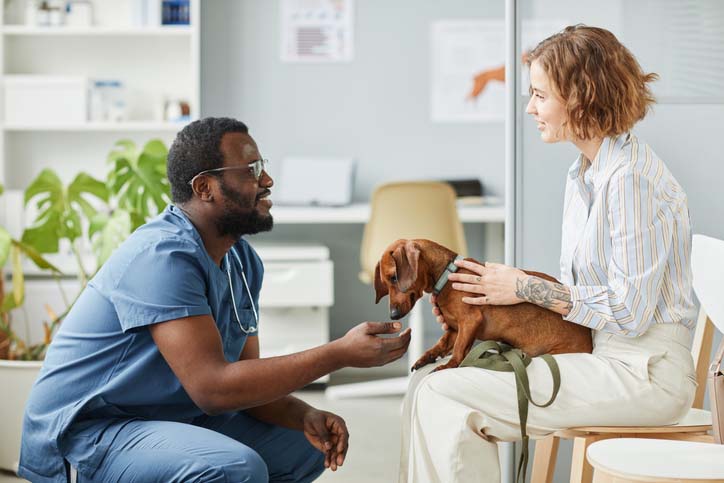
While eating quickly is common among dogs, it may sometimes signal an underlying medical issue. If your dog has always eaten at a normal pace but suddenly begins devouring his food at an alarming rate, it may indicate a problem that requires veterinary attention.
Dogs suffering from conditions such as diabetes, hyperthyroidism, or gastrointestinal disorders may develop an increased appetite, leading to rapid eating. As mentioned, parasites can cause a dog to feel constantly hungry, prompting him to eat faster than usual.
Frequent vomiting after meals, excessive bloating, or signs of discomfort after eating should not be ignored. If your dog regularly exhibits these symptoms, a veterinarian can help determine whether a health issue is contributing to his eating habits.
In some cases, behavioral factors such as anxiety or stress may be at play, and a vet can recommend strategies, such as consulting a dog trainer or veterinary behaviorist, to help address these concerns.
Any sudden or drastic changes in your dog’s eating behavior warrant professional evaluation to ensure his overall health and well-being. It’s also important to get your buddy regular checkups to make sure he stays healthy.
It’s About More Than Table Manners!
Slowing down your dog’s eating isn’t just about improving mealtime manners—it’s a vital step in ensuring his health and well-being. By understanding why dogs eat fast and implementing the right strategies, you can help them develop better eating habits.
Whether through slow feeders, puzzle toys, or changes in diet or feeding routines, taking the time to manage your dog’s eating speed can lead to a happier, healthier life for your furry companion. Though you might not stop your dog from gulping down his food if he gets the chance, you can slow him down to help him savor his meals, stay healthier, and become a more polite dining companion!
This content is for informational use only and does not replace professional nutrition and/or medical advice, diagnosis, or treatment. It is not a substitute for and should not be relied upon for specific nutrition and/or medical recommendations. Please talk with your veterinarian about any questions or concerns.
